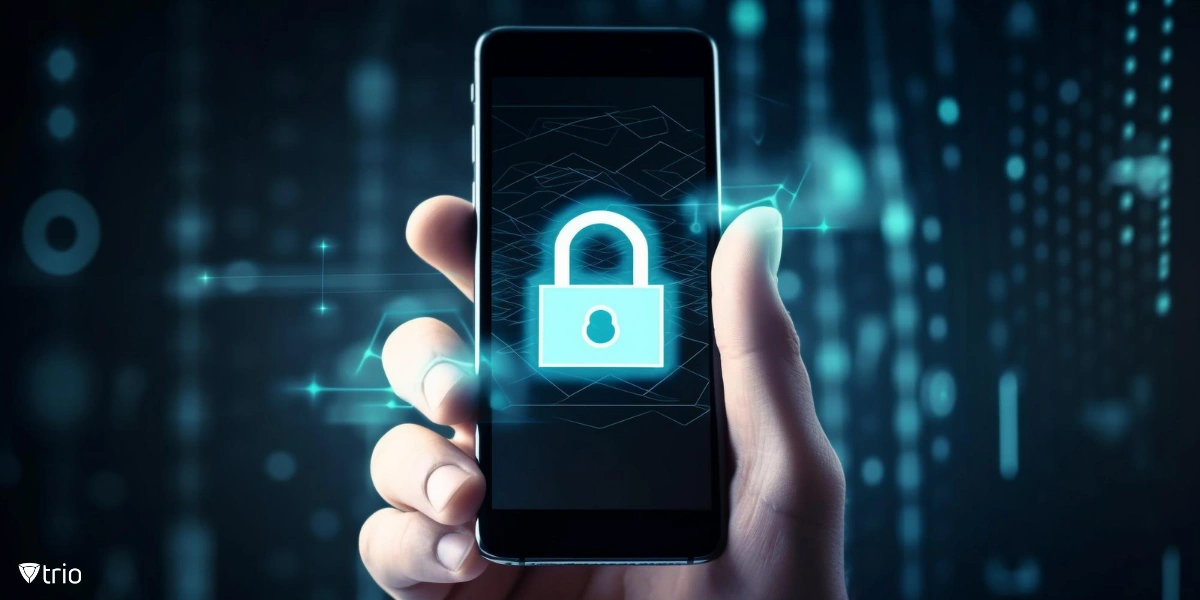Have you ever wondered how to improve safety culture in the workplace, especially in today’s tech-driven world? Safety culture refers to the collective values and practices within an organization that prioritize safety at all levels. Effective safety culture examples include regular cybersecurity training and open communication about potential threats.
As technology becomes integral to business operations, integrating tech safety practices into a strong safety culture has become increasingly important. A strong safety culture in the workplace now involves not just physical safety but also safeguarding digital assets. This integration helps protect sensitive information and ensures smooth, secure operations,
The purpose of this blog is to offer practical tips to improve workplace safety with a focus on tech safety awareness. By enhancing the employee experience through education and proactive measures, businesses can create an atmosphere where safety is a shared responsibility. Let’s explore how these strategies can strengthen your organization’s safety culture.
What Is Safety Culture
When you think about an effective safety culture, what comes to mind? Is it about preventing hackers from accessing your data or ensuring the office is a safe environment? In essence, safety culture refers to the collective values and practices that ensure safety at every level of an organization. In tech, it’s about creating a safety culture that marries traditional safety measures with tech-specific precautions.
Creating a safety culture today means prioritizing data protection. Have you considered what would happen if sensitive data were leaked? Effective data loss prevention strategies are essential to keep personal and company data secure. For instance, using encryption and regular backups can dramatically reduce data breach risks.
In today’s world, with employees logging in from various locations, ensuring remote work security has also become important. Imagine your home Wi-Fi as a fortress—would you leave the gate open? Implementing secure VPNs and robust firewalls helps shield your network from intruders. A study by OpenVPN found that 90% of IT professionals believe remote workers are not secure enough. It’s clear that securing remote work setups is a cornerstone of an effective safety culture.
Finally, let’s talk about secure communication. Creating a human firewall means training employees to be vigilant against cyber threats. After all, what’s the use of advanced tech if the team isn’t aware of the risks? Regular training sessions can empower employees to recognize phishing attempts and suspicious emails. Cultivating employee awareness turns them into the first line of defense, which enhances your safety culture significantly.
Why Tech Safety Enhances Safety Culture
Have you ever wondered about the real impact of company data breaches on tech businesses? Data breaches can be financially crippling. Such breaches don’t just affect financials—they harm a company’s safety performance by undermining trust and stability .
A data breach can be a nightmare for any business, damaging its reputation and eroding client trust. Picture a scenario where sensitive client information is leaked. Would you trust that company again? Rebuilding credibility is costly and time-consuming, often leading to a long-term negative impact on business relationships.
By enhancing data security, companies can significantly reduce risks. Think of it like strengthening your home’s security system: better locks mean fewer break-ins. A solid safety culture ensures that all team members are proactive in safeguarding company data.
Tech safety awareness also empowers employees, boosting their confidence and participation in safety practices. When workers understand the importance of cybersecurity, they are more likely to follow protocols and actively contribute to a safe environment. This empowerment translates into a more cohesive team that values safety as a shared responsibility.

Ideas to Improve Safety in the Workplace
How do you build a resilient safety culture in today’s fast-paced tech environment? It’s about integrating technology with traditional safety measures to create a workplace that prioritizes security and awareness. Here’s how you can enhance your safety culture effectively.
Leadership and Commitment
Leadership plays the main role in how to build a safety culture within any organization. Effective safety management starts at the top, with leaders setting clear expectations for cybersecurity and safety standards. This involves not only talking about safety but also demonstrating its importance through actions and policies.
Management’s commitment to safety is critical for prioritizing tech safety initiatives. Leaders can create a secure environment by allocating resources, time, and attention to cybersecurity measures. For example, regular meetings focused on security updates can reinforce the company’s commitment to safety.
Employee Training and Engagement
Regular cybersecurity training is conducive to a strong safety culture. These safety initiatives help employees stay updated on the latest threats and security practices. When employees understand the risks and how to mitigate them, they contribute more meaningfully to improving safety culture.
Engaging employees in tech safety practices is key to ensuring continuous improvement. Encourage employees to participate in interactive training sessions and workshops. Providing incentives for those who identify potential security threats can also motivate the team to stay vigilant and active.
Password Management and Authentication
Creating and managing strong passwords is a key part of maintaining strong safety practices. Encourage employees to use a combination of letters, numbers, and symbols to create unique passwords. This approach to safety standards significantly reduces the risk of unauthorized access to sensitive information.
Introducing multi-factor authentication (MFA) as a critical security measure adds an extra layer of protection. MFA requires users to provide two or more verification factors, making it much harder for unauthorized users to gain access.
Scam and Phishing Awareness
Educating employees on recognizing phishing attempts and scams is vital for strengthening the human firewall. Safe behavior online can prevent costly data breaches and protect sensitive company information. Regular training sessions and real-world simulations can help employees spot and report suspicious activity quickly.
Provide tips for safely handling suspicious communications, such as verifying email addresses, checking for grammatical errors, and avoiding clicking on unfamiliar links. Encourage employees to report any suspicious emails to IT to ensure quick action and to minimize potential risks.
Data Encryption and Protection
The role of data encryption can’t be overstated when it comes to creating a safe work environment. Encryption ensures that even if data is intercepted, it remains unreadable to unauthorized users. This practice protects both company and client information from potential breaches.
Highlight strategies for protecting data both at rest and in transit. Use encryption software to secure stored data and ensure that any data sent over the network is encrypted as well. These measures are essential for maintaining confidentiality and integrity in a digital workplace.

How Can Trio Help
Trio is a leader in IT and device management solutions, providing tools that support tech safety awareness and strong safety cultures. With Trio, organizations can effortlessly manage their IT infrastructure to ensure that all workplace devices are secure and compliant.
Employee Management
- Automates onboarding/offboarding to ensure compliance and security.
- Enhances employee experience by reducing administrative burdens.
Software Management
- Simplifies software distribution and updates.
- Ensures timely application of security patches to protect against vulnerabilities.
Endpoint Security
- Provides advanced solutions to safeguard devices from digital threats.
- Implements real-time threat detection and response for a safer work environment.
Enhancing Communication and Safety
Trio’s solutions also facilitate better communication and streamline safety processes, including regular safety meetings. By integrating IT management with safety culture initiatives, organizations can ensure that their teams are well-informed and prepared to handle potential threats, creating a safer, more efficient workplace. You can download your free demo today!
Conclusion
Here, we explored several strategies for improving safety culture in the workplace. We discussed the significance of leadership in safety management and their commitment to safety initiatives, the role of regular employee training, and the importance of data protection through robust password practices, multi-factor authentication, and encryption.
Integrating tech safety awareness into a broader safety culture is essential for safeguarding both physical and digital assets. Organizations can strengthen their defenses by implementing effective safety practices and empowering employees with the knowledge and tools to recognize and prevent potential threats. This proactive approach leads to a positive safety culture that benefits everyone.
Consider how Trio’s solutions can enhance your tech safety and safety culture initiatives. With tools like device management, employee management, software management, and endpoint security, Trio offers comprehensive support for creating and maintaining a strong safety culture in your organization.







